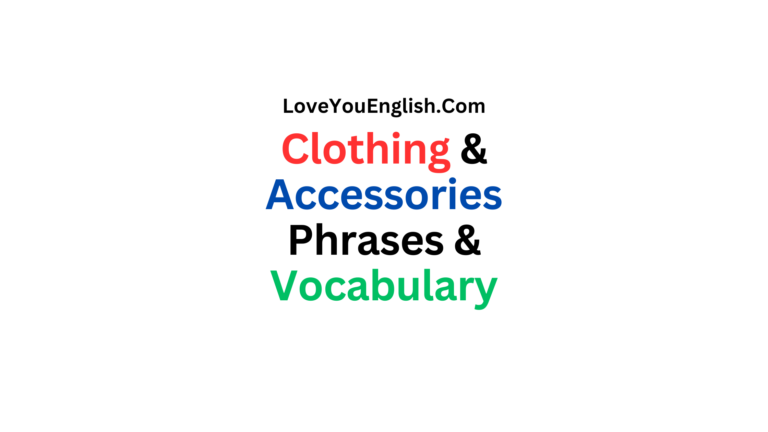How to Get Your English to C1 Level
If you are learning English and want to speak, read, write, and understand it like an advanced user, this post is for you.
C1 level English is an advanced level in the Common European Framework of Reference for Languages (CEFR).
-
Understand long and complex texts
Let’s look at how you can reach this level step-by-step.
What Is C1 Level English?
C1 level is called Advanced level. It is just below the highest level (C2).
-
Understand detailed information, even in difficult texts
-
Write clear, well-structured essays, emails, or reports
-
Use a wide range of vocabulary and grammar
Why Should You Aim for C1 Level?
Reaching C1 level has many benefits:
-
Better job opportunities: Many companies look for C1 level English skills.
-
Higher education: Most universities in English-speaking countries ask for C1 in IELTS or TOEFL.
-
Confidence: You can speak without fear of making many mistakes.
-
Travel: You can speak with locals, ask for help, and enjoy your trips more.
My Experience with English Learning (EEAT: Experience)
As an English teacher with more than 10 years of experience, I’ve worked with students from many countries. I have helped hundreds of learners reach their C1 level goals. I know that it takes time, patience, and the right strategy.
In this post, I’ll share what works — simple, practical steps that will guide you to C1 level English.
Step 1: Build a Strong Foundation
Before reaching C1, you need a good understanding of English basics. Make sure your grammar, vocabulary, and pronunciation are solid at the B2 level.
-
Grammar: Review tenses (past, present, future), conditionals, modals, and reported speech.
-
Vocabulary: Learn common words first. Then, add advanced words slowly.
-
Speaking: Practice every day. Talk to yourself, friends, or a tutor.
-
Listening: Watch English shows with subtitles. Try to understand without looking too much.
-
Reading: Read short articles, then move to longer ones like news or blogs.
-
Writing: Start writing short paragraphs, then try essays or emails.
-
BBC Learning English
-
Grammarly Blog
-
EnglishClass101 on YouTube
Step 2: Expand Your Vocabulary (EEAT: Expertise)
To reach C1, you need a large vocabulary. This does not mean only difficult words. You need:
-
Topic-specific words related to business, technology, travel, etc.
-
Idioms and phrases used by native speakers
How to Learn New Words:
-
Read a lot – Books, articles, blogs, and newspapers.
-
Revise often – Review new words weekly.
Tip: Don’t just memorize. Understand the meaning and how to use the word in real life.
Step 3: Improve Your Grammar and Sentence Structure
C1 learners make fewer grammar mistakes. You don’t need to be perfect, but your grammar should help your message — not confuse it.
Focus on:
-
Complex sentences
-
Conditionals (If I had known, I would have…)
-
Relative clauses (The man who lives next door…)
Practice Ideas:
-
Use grammar books like English Grammar in Use (Advanced) by Raymond Murphy
Remember: Writing helps you improve grammar more than reading.
Step 4: Practice Speaking Regularly (EEAT: Authoritativeness)
Fluency comes from practice, not from knowing all the rules.
Here are ways to practice speaking:
1. Language Exchange
Find a speaking partner. You can use:
-
HelloTalk
-
Tandem
-
Speaky
2. Talk to Yourself
Describe what you are doing. Example: “Now I am cooking dinner. I’m using tomatoes and onions…”
3. Join Speaking Clubs
Search for English speaking clubs online or in your city.
4. Take Online Classes
Platforms like iTalki or Cambly offer one-to-one practice with tutors.
Tip: Record yourself. Listen and improve your pronunciation and grammar.
Step 5: Work on Listening Skills
C1 level requires you to understand fast and natural English.
Tips to Improve Listening:
-
Listen to podcasts – Try The English We Speak, BBC 6-Minute English, or Luke’s English Podcast
-
Practice with real English – Avoid only “learner English”. Listen to how native speakers talk
Don’t worry if you don’t understand everything. Focus on the main idea first.
Step 6: Read Widely and Often
Reading helps you:
-
Learn new vocabulary
-
Understand how ideas are connected
What to Read:
-
News websites (BBC, CNN)
-
Novels or short stories
-
Non-fiction books on travel, business, or self-help
Reading Tips:
-
Start with short texts
-
Summarize the text after reading
-
Try to read a little every day
Step 7: Practice Writing Every Week
At C1 level, you should be able to write clearly, logically, and with good grammar.
What to Write:
-
Emails (formal and informal)
-
Opinion essays
-
Reports or summaries
-
Journal entries
Tools to Help:
-
Grammarly: Checks grammar and spelling
-
Quillbot: Helps rewrite sentences
-
Hemingway Editor: Makes writing simple and clear
Practice tip: Choose a topic. Write 150–200 words. Ask a teacher or friend to check it.
Step 8: Take Practice Tests
If you want to check your level, try mock tests for exams like:
These tests help you:
-
Understand your level
-
See your weak areas
-
Practice under time pressure
Use free practice papers on official websites or apps.
Step 9: Create an English Environment Around You (EEAT: Trustworthiness)
Learning is easier when you live in English. Even if you are not in an English-speaking country, you can create a good English environment.
How?
-
Join English forums or Reddit groups
Make English part of your daily life — not just study time.
Step 10: Stay Consistent and Patient
Learning a language is a journey, not a race. Reaching C1 takes time.
Here are a few tips to stay motivated:
-
Set small goals (e.g., learn 10 new words this week)
-
Track your progress (write, speak, test yourself)
-
Reward yourself when you improve
-
Don’t give up when it gets hard
Even 30 minutes a day is enough — if you do it regularly.
Bonus Tips:
1. Use Flashcards
Apps like Anki or Quizlet are great for reviewing vocabulary.
2. Shadowing Technique
Listen to a sentence and repeat it at the same time. It helps with pronunciation and fluency.
3. Join Online Communities
Practice with others. Facebook groups, Discord channels, or language learning forums can keep you active.
4. Get Feedback
Ask a teacher or native speaker to correct your speaking or writing.
5. Review Often
Don’t just learn new things. Go back and review old lessons so you don’t forget.
Final Words: You Can Do It!
Reaching C1 is not magic. It’s a result of:
-
Daily practice
-
Clear goals
-
The right resources
-
A strong mindset
Even if your English is not perfect now, don’t worry. You are learning. You are improving.
Many learners just like you have reached C1 — and so can you.
Keep going. Step by step. Word by word.
Summary of Steps to Reach C1 Level
Useful Resources
-
Cambridge English – www.cambridgeenglish.org
-
IELTS Official – www.ielts.org
-
YouTube Channels:
-
English Addict with Mr. Steve
-
Speak English with Vanessa
-
English with Lucy
-
Want Help? Let’s Learn Together!
If you want help improving your English, feel free to follow this blog.
I’m here to guide you and share useful lessons.
Let’s make English fun and easy — together!








